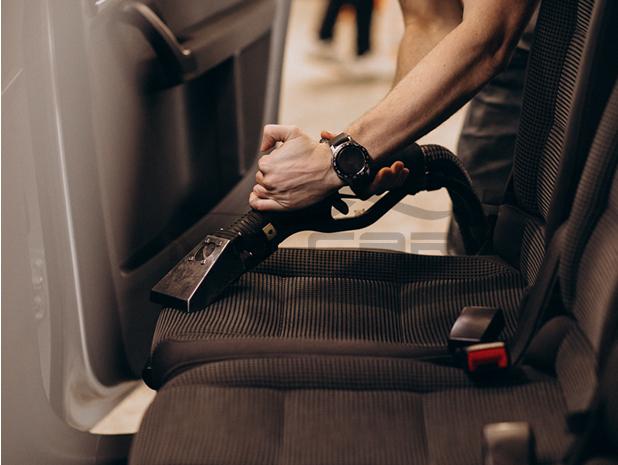Walk into a well-run finishing facility and it’s hard not to notice the rhythm—parts flowing through, colors popping, and every step working like clockwork. That efficiency isn’t accidental. Large-scale powder coating machines hide powerful design features that quietly push productivity forward while maintaining high-quality finishes. These features often go unnoticed, but they can make a huge difference in daily output and long-term performance.
High-capacity Curing Chambers Supporting Uninterrupted Batch Flow
A high-capacity curing chamber is more than just a large oven—it’s a precision-controlled environment that keeps production lines moving without pause. By allowing multiple racks or oversized components to cure simultaneously, these chambers eliminate bottlenecks between coating and finishing stages. Their size means operators can load parts in organized batches, maintaining a consistent rhythm while reducing idle time.
For a powder coating machine, uninterrupted batch flow translates to more uniform finishes and fewer production delays. The chamber’s internal heat distribution ensures that every piece, regardless of size or position, reaches optimal curing temperature. This capability becomes especially valuable for facilities running diverse product lines, where mixed loads need even results without adjusting the schedule for each batch.
Cross-draft Airflow Configurations Maintaining Uniform Coating Thickness
Cross-draft airflow might seem like a minor detail, but in a large powder coating machine, it can be a game-changer. By moving air horizontally across the work area, these systems minimize overspray buildup and keep powder particles evenly suspended. That consistent airflow means every surface gets the same coating density, even on complex shapes or recessed areas.
Uniform coating thickness reduces the need for touch-ups and rework, which keeps operators focused on applying fresh coats instead of correcting uneven coverage. For large-scale jobs or high-volume output, this feature directly supports both quality and speed. It also helps extend filter life, as the airflow pattern reduces hotspots where powder can accumulate excessively.
Precision Conveyor Speed Controls Aligning Cure Cycles with Production Pace
Not all parts need the same amount of time in the curing stage, and that’s where conveyor speed control makes its mark. In a powder coating machine equipped with precision speed settings, operators can match line movement to the exact curing requirements of different coatings. Slower speeds allow for thicker or specialty powders to set perfectly, while faster speeds keep high-volume runs moving efficiently.
This alignment between conveyor speed and cure cycle helps avoid under-cured finishes, which can fail in the field, and over-cured parts, which waste time and energy. By tailoring movement to the product, facilities maintain consistent throughput without compromising quality, turning the conveyor system into a finely tuned productivity tool rather than just a transport mechanism.
Multi-zone Heat Management Stabilizing Performance Under Heavy Loads
Multi-zone heat management takes the concept of even heating to another level. Instead of treating the curing chamber as one large space, it’s divided into independently controlled zones. Each zone can be set to its own temperature, allowing operators to adapt conditions for specific materials or powder types in real time.
This feature shines when the powder coating machine handles mixed loads or high thermal mass components alongside smaller, lighter parts. By balancing heat output across zones, operators prevent cold spots and overheating, even during peak workloads. That stability maintains a consistent finish and prevents wasted energy, making it a long-term win for both quality and operational costs.
Quick-access Maintenance Panels Reducing Service-related Downtime
Downtime for maintenance is unavoidable, but how quickly a machine can be serviced makes all the difference. Quick-access panels built into a powder coating machine allow technicians to reach filters, fans, heating elements, and control systems without dismantling large sections of the equipment. This speeds up routine checks and emergency repairs.
By simplifying access to critical components, these panels help keep the machine running at peak capacity. Reduced downtime means operators can stick to production schedules more reliably, and maintenance crews can address small issues before they turn into bigger, more expensive problems. Over time, this straightforward design choice pays back in uninterrupted output.
Integrated Powder Reclamation Systems Sustaining Material Efficiency
Powder reclamation systems capture and recycle overspray, turning what would be waste into reusable material. In a large powder coating machine, this can dramatically improve efficiency, especially when working with high-cost specialty powders. The integrated system funnels unused powder through a filtration process, separating usable material from contaminants.
This closed-loop approach keeps material costs down and reduces environmental impact. Operators also benefit from cleaner workspaces, as less powder escapes into the surrounding area. Over time, the cost savings from reclaimed powder add up, making this a hidden productivity lever that directly affects the bottom line.
Scalable Booth Footprints Accommodating Oversized Industrial Components
Not all projects fit neatly into standard booth sizes. Scalable booth footprints give facilities the flexibility to handle oversized parts without sacrificing efficiency. These adaptable designs allow extensions or modifications to be added to the booth, creating more space when needed without replacing the entire powder coating machine.
This adaptability is especially valuable for facilities serving diverse clients or industries where part dimensions can vary widely. By accommodating larger components, operators can keep all finishing work in-house rather than outsourcing, saving both time and transportation costs. It also opens the door to taking on bigger contracts, effectively turning floor space into a growth opportunity.




